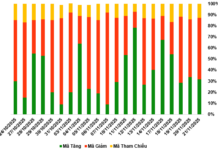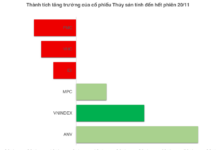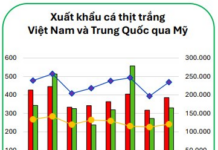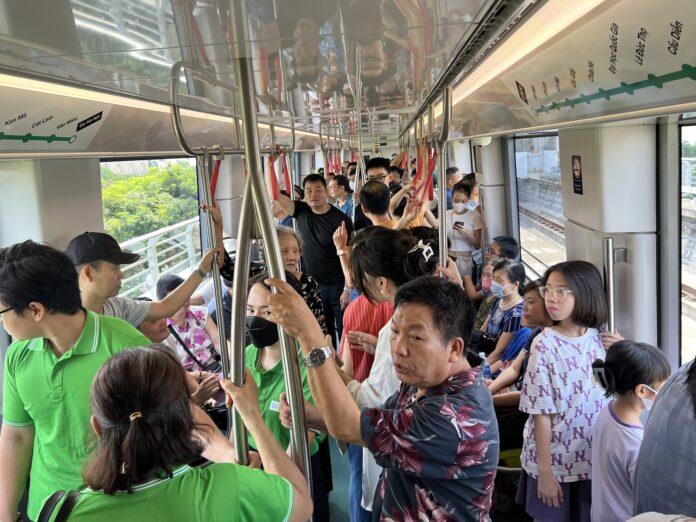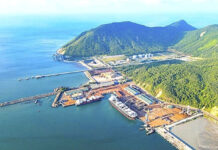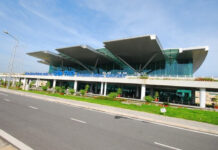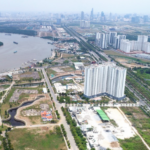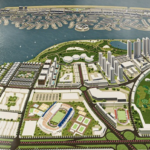Record-Breaking Passenger Numbers on the First Day of Commercial Operation
On August 8, at 8 am, the 8.5km-long elevated section of Hanoi’s Metro Line 3, running from S1 to S8 stations, officially commenced operations, offering free rides to the public for the first 15 days. By the end of its first day of commercial operation, the elevated section of Line 3 had served an impressive 34,184 passengers.
The two terminus stations, Nhon (S1) and Cau Giay (S8), witnessed the highest passenger numbers, while the six intermediate stations along the line experienced lower passenger volumes.
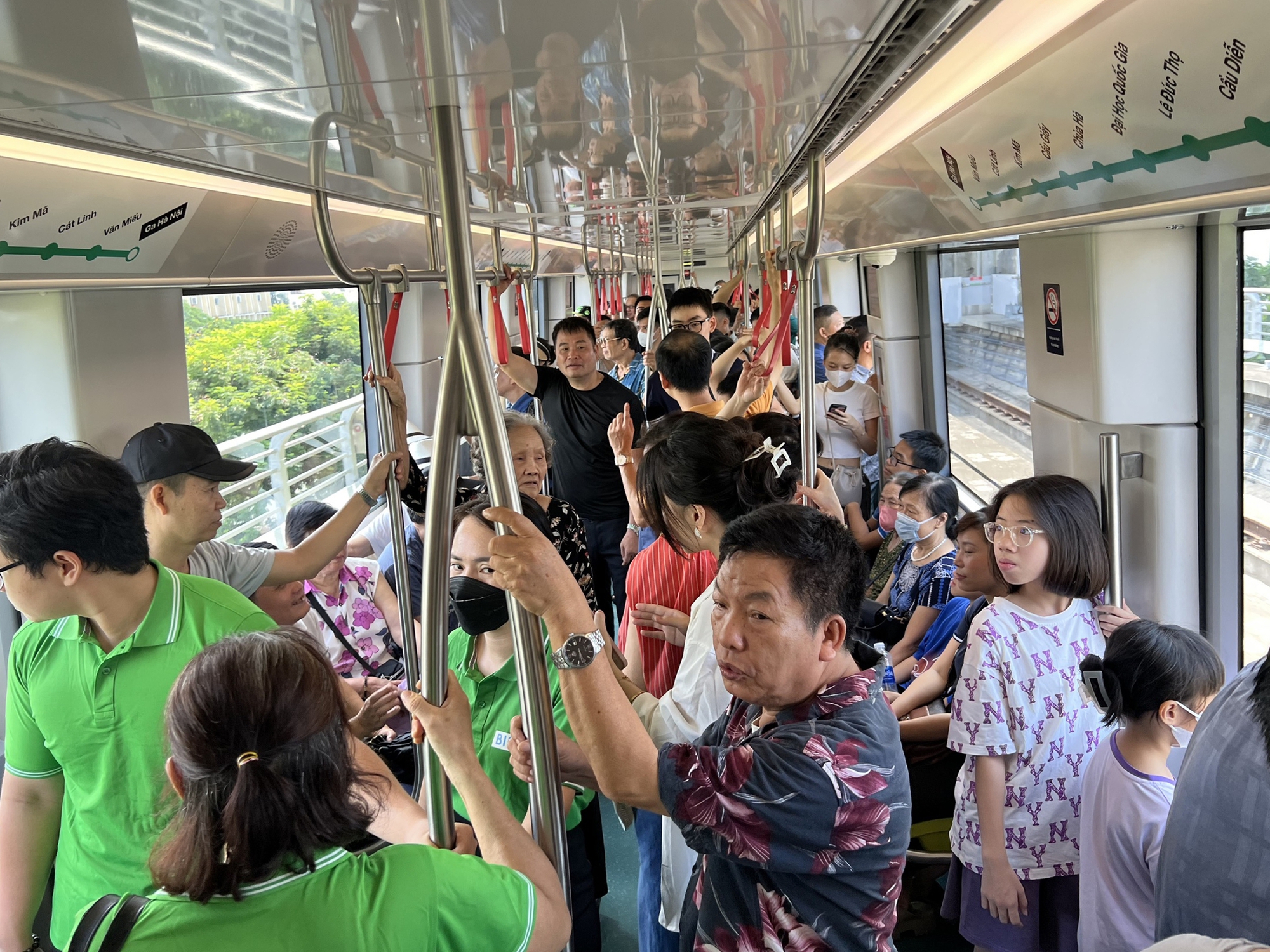
Nhon – Hanoi Metro attracts large crowds on its first day. Photo: Thai Ha
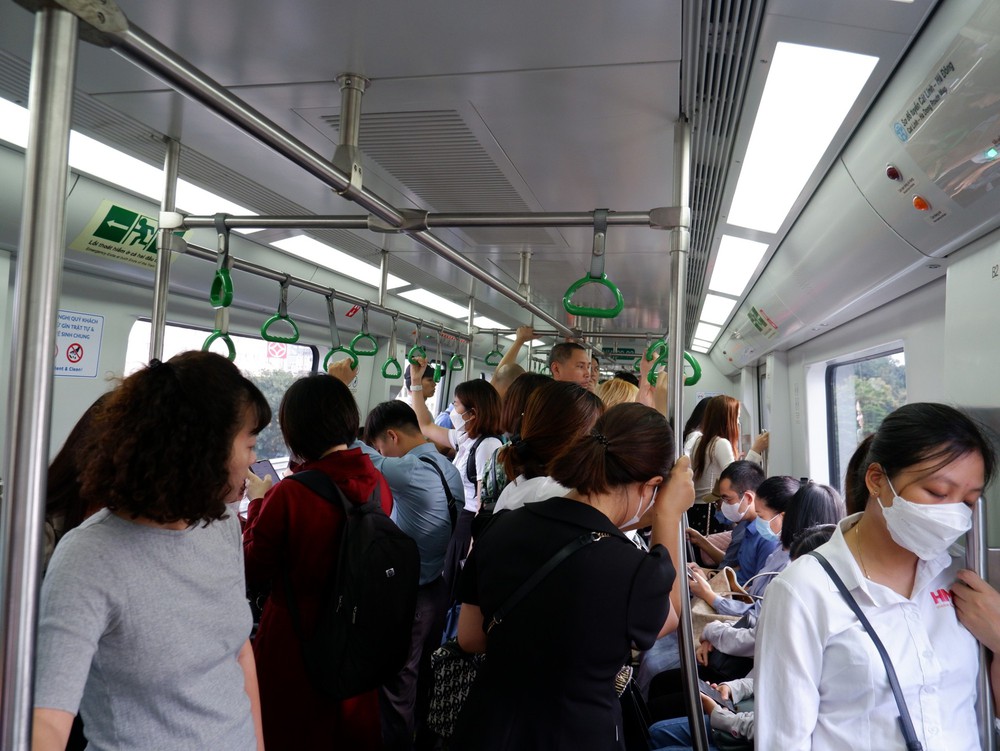
Cat Linh – Ha Dong Line. Photo: Trang Anh
While this passenger count is remarkable for a new metro line in the capital, it falls short of breaking the record set by the Cat Linh – Ha Dong Line three years ago.
On its inaugural day of operation (from 8 am to 10 pm on November 6, 2021), the Cat Linh – Ha Dong Line operated 109 trips, carrying 39,520 passengers.
Both lines operated smoothly, safely, and consistently during their respective first days of operation, bringing joy to the citizens of Hanoi who had long awaited the arrival of these modern urban transport systems.
Why Didn’t the Nhon – Hanoi Metro Line Surpass the Cat Linh – Ha Dong Line on Its First Day?
Firstly, the Cat Linh – Ha Dong Line was the country’s first metro line, creating a sense of excitement and anticipation among the public. This event not only marked a significant step forward in developing public transport infrastructure but also became a source of pride for Hanoians as they experienced riding an elevated train for the first time.
Additionally, the Cat Linh – Ha Dong Line boasts a longer route and more stations than the elevated section of the Nhon – Hanoi Line (13.05km vs. 8.5km and 12 stations vs. 6 stations). The Line 2A, when inaugurated, offered a complete route, making it more convenient for passengers to travel to various destinations within the city.
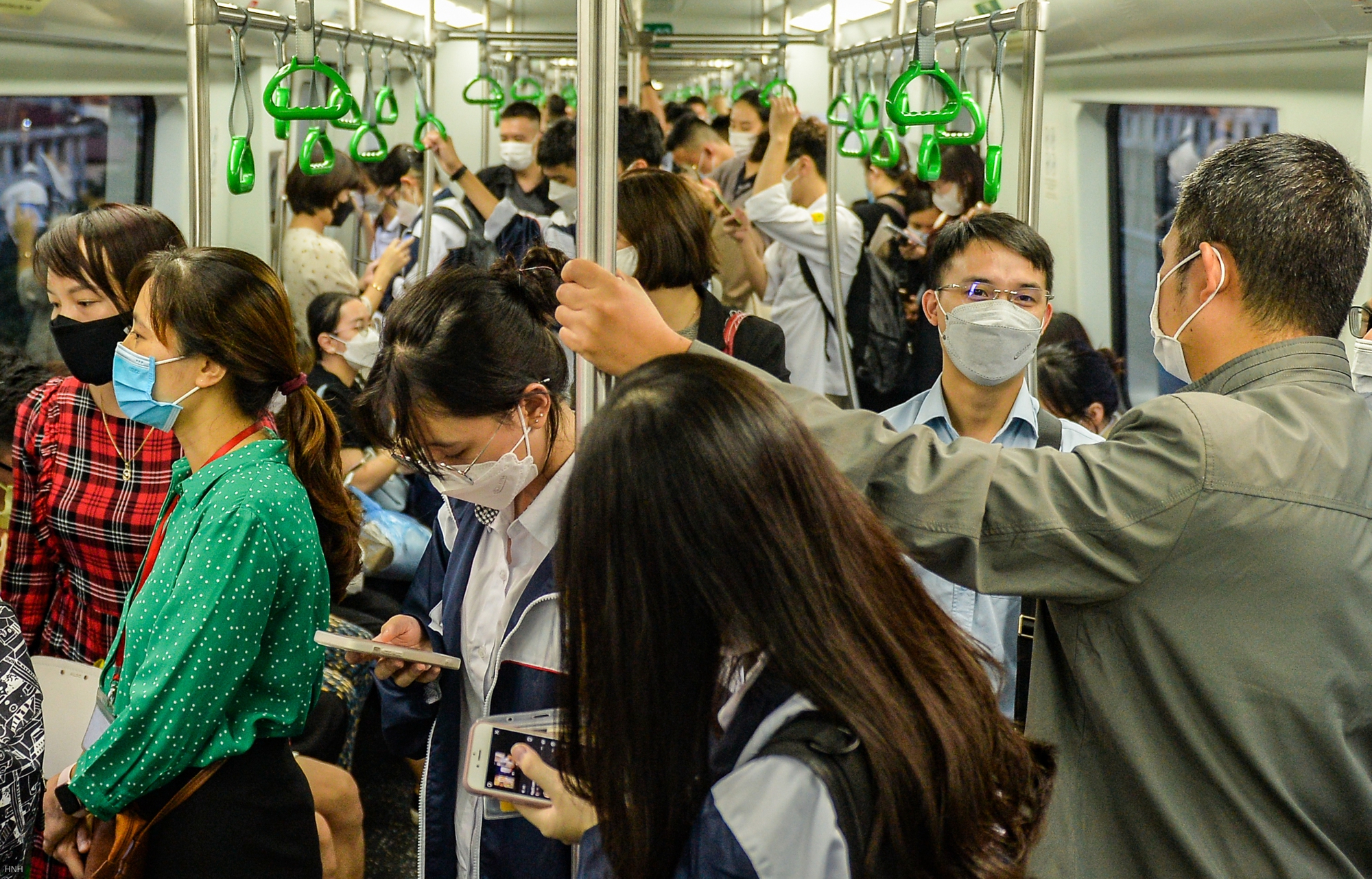
Cat Linh – Ha Dong Line packed with passengers during rush hour. Photo: To Quoc
In contrast, the Nhon – Hanoi Line, in its initial phase, only covers half of the intended route and does not directly serve the core central areas of the capital, where passenger demand is typically higher due to the concentration of tourist attractions, shopping, and entertainment options. This limitation reduces the line’s attractiveness as passengers need to make multiple transfers to reach their final destinations, decreasing convenience and competitiveness compared to other transport options.
However, the Nhon – Hanoi Line passes through the vicinity of several prominent universities in Hanoi, such as the National University, the University of Transport and Communications, the Academy of Journalism and Propaganda, the University of Commerce, and the University of Industry. This suggests that passenger numbers are likely to increase significantly in the future.
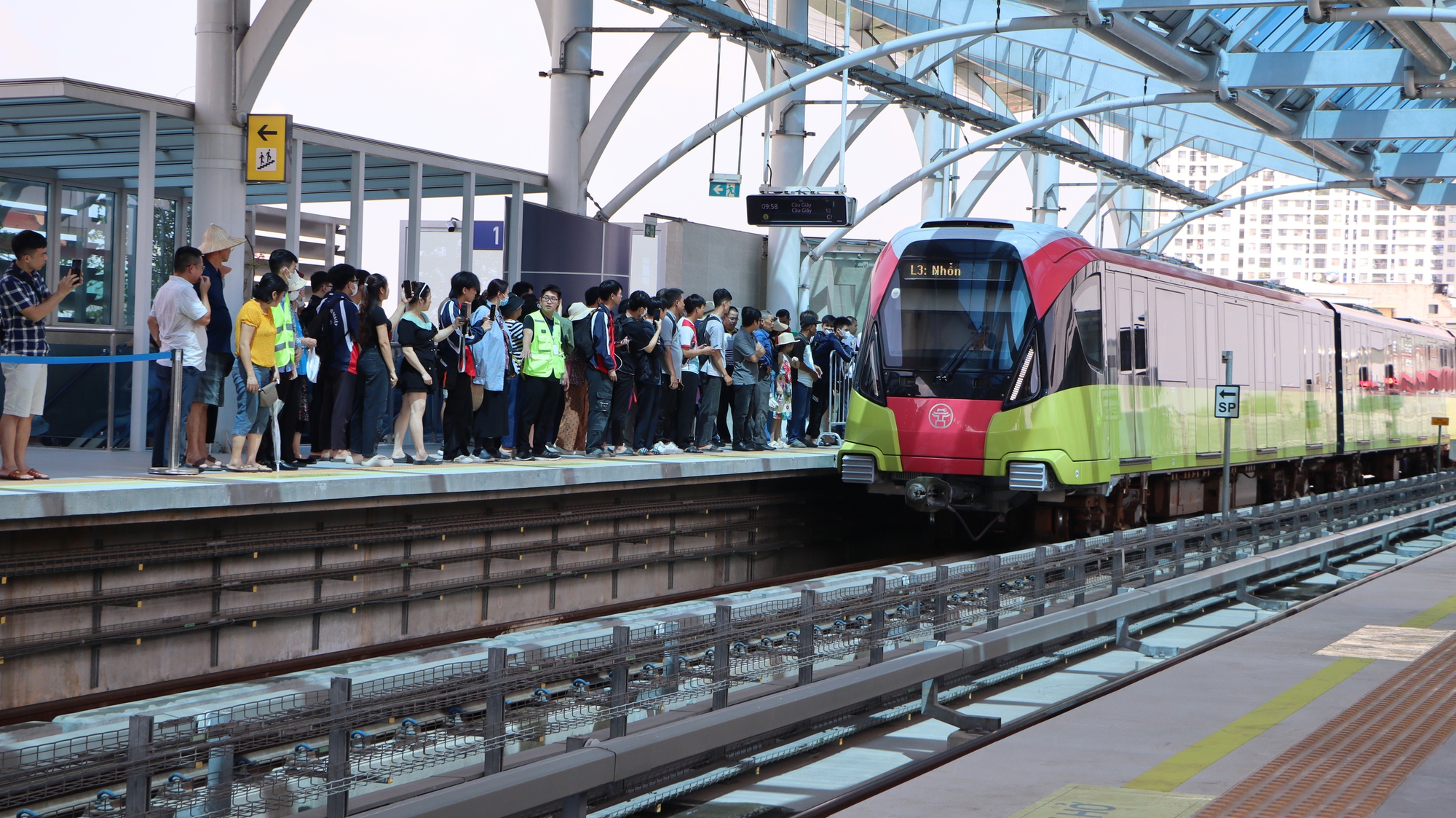
Forecast of future passenger numbers for the Nhon – Hanoi Line. Photo: Thai Ha
Similarities and Differences Between the Nhon – Hanoi and Cat Linh – Ha Dong Lines
Both lines experienced significant delays during their construction. Line 2A was approved by the Ministry of Transport in 2008, with construction commencing in 2011 and operations starting in November 2021. Line 3’s elevated section was approved for investment by the Hanoi People’s Committee in 2009, with construction starting in 2010 and operations commencing in August 2024.
In terms of financing, both lines experienced substantial cost overruns. The initial investment for the Cat Linh – Ha Dong Line was VND 8,770 billion, which later increased to VND 18,002 billion. The Nhon – Hanoi Line’s initial investment stood at VND 18,408 billion but was later adjusted to VND 34,826 billion.
Technologically, the 2A Line utilizes 13 trains (each with 4 carriages) manufactured by the Beijing Subway Rolling Stock Equipment Co., Ltd. (China). In contrast, the Nhon – Hanoi Line employs 10 trains specially designed by Alstom (France).
Both metro lines operate at an average speed of 35km/h (maximum 80km/h) and feature a 4-carriage design. However, their passenger capacities differ slightly. The Cat Linh – Ha Dong Line can accommodate 960 passengers, including standing and seated passengers, with a seat ratio of 144/960 (15%). Meanwhile, the Nhon – Hanoi Line has a capacity of 944 passengers, with 94 seats, resulting in a seat ratio of 10%.
















